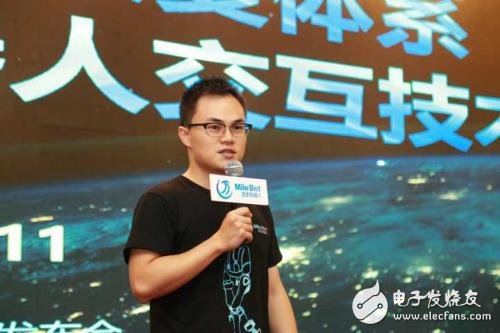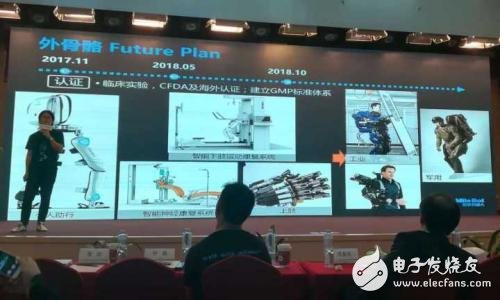On September 12, 2016, in a coffee shop in Nanshan, Shenzhen, three young people finalized a business plan. After 11 days, they became a partner and set up a company called the Step Robot.
Now that one year and two months have passed, on the day of the Double Eleven, the stepping robot released its first exoskeleton robot for the hemiplegic patient, the BEAR-H1. The mission of this robot is also very clear: to help everyone in a wheelchair stand up and walk again.
When it was first established a year ago, there were only three members of the company, namely Chen Gong (CEO), Ye Jing (CTO) and Hu Feng (COO); the office area is an office that can only accommodate six grids, located in Nanshan. An incubator in the software industry base.
Chen Gong graduated from Shanghai Jiaotong University and went to the National University of Singapore to pursue his Ph.D. The subject of his research is the rehabilitation of exoskeleton robots and flexible drive interaction technology. During his studies, Chen Gong met with the post-doctoral Ye Jing of the same laboratory. Ye Jing graduated from Waseda University in Japan and studied under the Japanese humanoid robot Kato Ichiro. His research direction has also been related to exoskeleton robots.

Dr. Chen Gong, co-founder and CEO of Step Robot
Chen Gong recalled that before the establishment of the step, the idea of ​​starting a business has been brewing and preparing for two years. After completing the doctoral thesis, he cooperated with Ye Jing to invest in the research and development of exoskeleton robot products.
During this period, they returned to China to inspect several cities and finally chose Shenzhen. One of the important reasons is that they have taken advantage of the strong industrial chain supporting and manufacturing capabilities of the Pearl River Delta.
After graduating from Ph.D., Chen Gong also found Hu Feng, who has worked hard in the automation equipment and robotics industry for many years, and has rich experience in operations and management. The idea of ​​entrepreneurship of three people hit it off and immediately registered the company. In April of this year, the stepping robot won the angel round financing led by Lenovo Venture Capital Group, and the company also entered the fast track of development.
In the past more than a year, Maibu has grown from a small team of only 3 people to nearly 30 companies. The office area has moved from a six-person grid to a large office of 1,000 square meters. After three generations of product prototype iterations, it took a step. The team finally polished the mature and scalable application robot BEAR-H1, and has successfully entered the hospital to achieve clinical testing.
The world's first flexible drive, the price is only 1/3 of similar foreign productsChen Gong said that the biggest feature of the BEAR-H1 exoskeleton robot is the use of a flexible drive as the output, and is the world's first. Currently available exoskeleton robots, including the United States and Japan, are rigid drives.
The advantage of the flexible drive is that in the scene of human-computer interaction, the force feedback is realized without the force and torque sensors, which not only improves the stability and accuracy of the force control, but also improves the safety and saves energy consumption. .

At the press conference, the step-by-step robotic engineer demonstrated the effect of the BEAR-H1 walking on the scene and successfully demonstrated the entire walking process.
It is understood that the BEAR-H1 has powered 6 joints (bilateral hip, knee, ankle), and hip rotation auxiliary joints, which can achieve natural gait, suitable for patients between 150-190cm in height and less than 85kg. And its exoskeleton size is adjustable, equipped with a gait monitoring and evaluation system, the physical therapist or family can monitor the patient's motion data in real time through the touch screen.
"The robot also has a lot of sensors installed to detect the movement state of the human body in real time. It can also predict the human body's intentions through specific AI algorithms, such as the speed of movement, start and stop, left or right legs, etc. Information will be collected and used to control the robot." Chen Gong introduced it further.
The high price has always been the main reason for the majority of patients with hemiplegia who are deterred from external bone robots.
It is understood that the current production volume of the Israeli Rewalk and Japan's Cyberdyne two exoskeleton robots, the average selling price is 60-100 million yuan per unit, and even the price of similar products up to 2.5 million yuan, so often only through leasing The way it is used by the demander.
In comparison, the price advantage of the stepping exoskeleton robot is very obvious. According to Chen Gong, after the stepping robot products of Maibu are put into the market, the price will be half or even 1/3 of that of foreign similar products, and they can be functionally equal to these international brands.
The exoskeleton robot market is expected to reach 100 billion in the future, but it is a difficult bone.According to the predictions of third-party consulting firm GrandView Research, the compound annual growth rate of generalized rehabilitation robots in the next five years is about 37%, of which the annual compound growth rate of exoskeleton robots is 47%, which is much higher than the average increase of other types of medical robots. Speed, the market capacity in the future is expected to reach 100 billion.
China, with a large population, will undoubtedly become a major consumer of exoskeleton products. There are two main reasons behind the rapid development of the market:
First, along with China's accelerated entry into an aging society, the incidence of stroke has become higher and higher. At present, the number of stroke patients in China has exceeded 10 million, and it is still growing at a rate of 10% every year. The situation in developed countries such as Europe, the United States, and Japan is even more serious.
Second, the shortage of medical resources, China's professional stroke patients rehabilitation physiotherapist resources are seriously inadequate, according to the number of domestic stroke patients, about 400,000 rehabilitation physiotherapists, but the professional practitioners only about 20,000, the gap is huge.

Although the outlook is considerable, the exoskeleton robot is still a difficult bone. On the one hand, because of the high technical threshold of the industry, high research and development costs, and imperfect product experience; on the other hand, because of the particularity of the medical industry, exoskeleton robots have not yet been included in our medical insurance system, and ordinary people cannot afford it.
From the perspective of product commercialization, Israel's Rewalk and the US EKSO have already obtained the FDA certification and entered the stage of sales. Although there are many listed companies and startups in China involved in this field, so far no company has obtained CFDA certification, and there is no real product to enter commercial use.
Lithium Fluorinated Carbon Batteries Of 14250
Lithium Fluorinated Carbon Batteries Of 14250,New Material Br14250 For Test Equipment,High Temperature Resistance For Aerospace Industry,Longlasting Li Batteries
Shandong Huachuang Times Optoelectronics Technology Co., Ltd. , https://www.dadncell.com